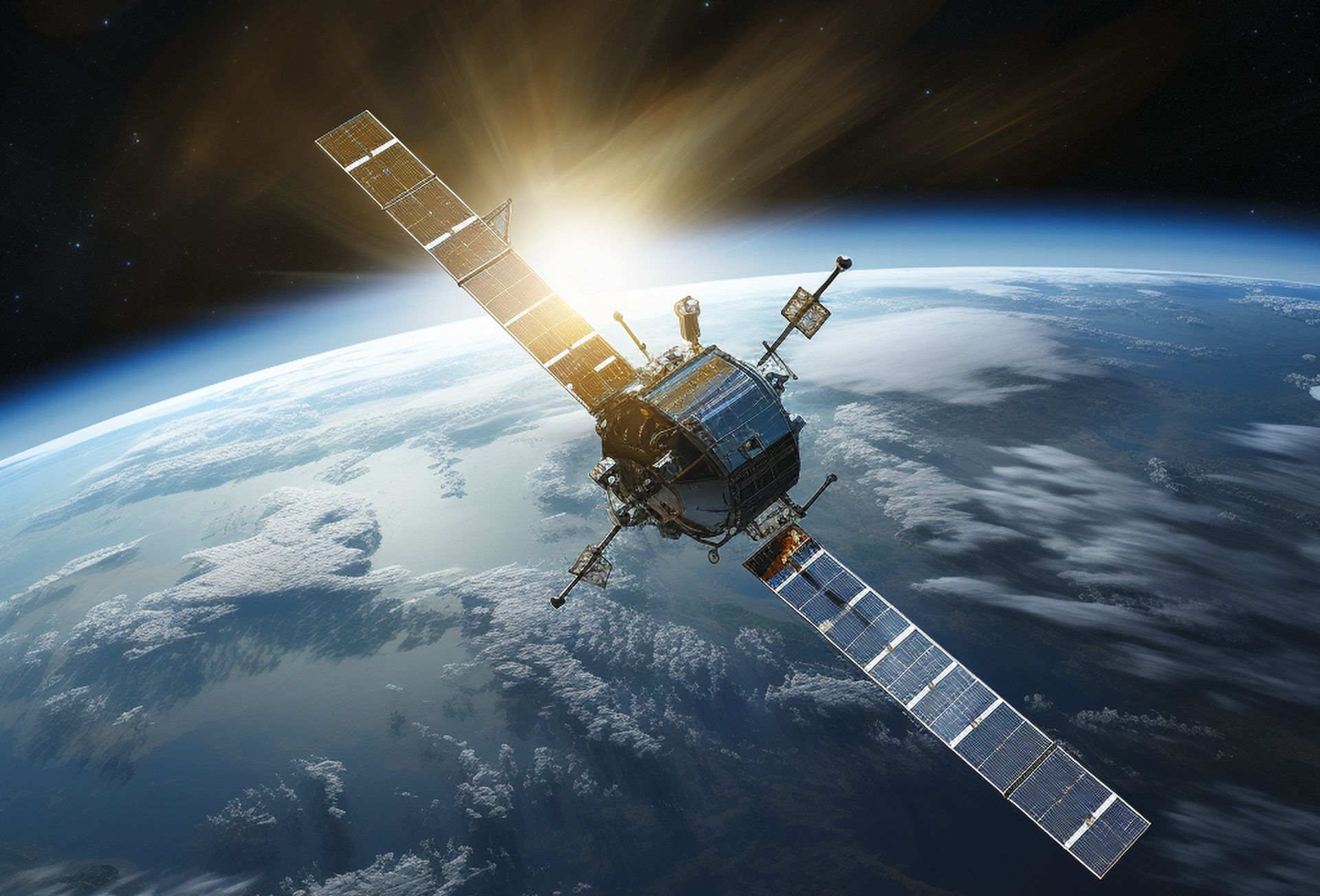
Harnessing the potential of Artificial Intelligence (AI) and machine learning technologies, a new generation of startups is unlocking the code of complex weather patterns. Enterprises such as OpenAI, Zeus AI and Tomorrow.io are leading the charge, utilizing advanced technologies to generate more precise forecasts. These predictions, deeply embedded in vast satellite data sets, are not only ensuring safety but are shaping the future of energy sustainability and business decision-making.
Mimicking Human Language to Decode Weather Patterns
OpenAI has developed an impressive model, GPT-4, proficient in mimicking the structure and content of human language, assimilating enormous text data to produce contextually relevant outputs (source: openai.com). Simultaneously, other AI startups are translating these methods to decipher the language of weather patterns.
Transforming Short-term Weather Forecasting with AI
Two former NASA scientists, Thomas Vandal and Kate Duffy, founded Zeus AI intending to transform short-term weather forecasting. The startup leverages data from the latest generation of government satellites, including details on atmospheric winds, water vapors, temperature changes, and cloud cover (source: preventionweb.net). With high-density data from NASA and NOAA’s latest geostationary satellites, Zeus AI offers an efficient, cost-effective method to predict weather patterns.
Tomorrow.io: Pioneering AI Weather Forecasting
In parallel, Boston-based Tomorrow.io is employing AI technologies to synthesize a wealth of data sources, ranging from wireless signals to operational weather models and machine learning. Tomorrow.io’s technology considers how precipitation affects the signal between two cellular towers.
In addition, the weather forecasting company has made significant advancements in its One Forecast (1F) Model, promising 38% better data for supporting predictive business decisions.
Their unique combination of machine learning and numerical weather prediction technology generates probabilistic predictions, improving decision-making confidence.
The Cost-effectiveness of AI in Weather Forecasting
AI’s transformational power lies in its ability to swiftly analyze and learn from colossal datasets. Traditional weather forecasting systems, as Vandal points out, struggle to process high-density data due to exorbitant costs. “This is where machine learning comes in,” says Vandal, highlighting the cost-effectiveness of AI models.
AI and the Future of Green Energy
However, it’s not just about improving weather predictions. The implications of AI stretch further, promising to mold the future of green energy. With more accurate forecasts, renewable energy sources can be better integrated into power systems, reducing costs and ensuring efficiency. This could lead to “less reliance on thermal energy storage as a backup.
Implications Across Industries
Moreover, AI-powered weather predictions have enormous potential to benefit various sectors, from agriculture to aviation and energy. Tomorrow.io’s 1F model, for instance, with its high spatial resolution and high refresh rate, aids better decision-making, thereby enabling businesses to protect their assets and resources.
The Crucial Role of Weather APIs and AI
Weather APIs, serving as the link between AI models and real-time, comprehensive weather data, are instrumental to the advancements being made in AI weather forecasting. They provide AI models with a wealth of training data, including a myriad of variables such as temperature, wind speed, humidity, and precipitation levels, in addition to severe weather alerts. These APIs enable AI systems to understand and learn from complex weather patterns, thereby improving forecasting accuracy (source: tomorrow.io).
Weather APIs aid in distributing this critical information to users. From businesses optimizing their operations based on the forecasted weather conditions to individuals adjusting their daily plans, Weather APIs ensure that AI-driven weather forecasts are readily accessible. As AI continues to transform weather forecasting, the importance of Weather APIs in collecting, processing, and disseminating weather data will undoubtedly grow.
The Promising Future of AI Meteorology
These pioneering advancements demonstrate how the convergence of AI and climate science can revolutionize our understanding of, and response to, the world. With such ground-breaking strides in AI meteorology, a promising future lies ahead, where the capricious nature of weather transforms from a significant obstacle into a well-understood and effectively managed phenomenon.
- SEO Powered Content & PR Distribution. Get Amplified Today.
- PlatoData.Network Vertical Generative Ai. Empower Yourself. Access Here.
- PlatoAiStream. Web3 Intelligence. Knowledge Amplified. Access Here.
- PlatoESG. Automotive / EVs, Carbon, CleanTech, Energy, Environment, Solar, Waste Management. Access Here.
- BlockOffsets. Modernizing Environmental Offset Ownership. Access Here.
- Source: https://dataconomy.com/2023/06/26/the-ai-revolution-in-weather-forecasting-enhanced-predictive-power-boosts-decision-confidence-for-businesses/
- :has
- :is
- :not
- :where
- a
- ability
- About
- accessible
- accuracy
- accurate
- across
- addition
- advanced
- advancements
- affects
- agriculture
- ahead
- AI
- AI systems
- AI-powered
- Aid
- aids
- Alerts
- an
- analyze
- and
- APIs
- ARE
- artificial
- artificial intelligence
- Artificial intelligence (AI)
- AS
- Assets
- atmospheric
- aviation
- Backup
- based
- BE
- being
- benefit
- Better
- between
- boosts
- business
- businesses
- but
- CAN
- cellular
- Changes
- charge
- Climate
- Cloud
- code
- Collecting
- combination
- comes
- company
- complex
- comprehensive
- conditions
- confidence
- considers
- content
- continues
- Convergence
- cost-effective
- Costs
- could
- cover
- critical
- crucial
- daily
- data
- data sets
- datasets
- Decipher
- decision
- Decision Making
- decisions
- demonstrate
- details
- developed
- distributing
- due
- effectively
- efficiency
- efficient
- embedded
- enable
- enabling
- energy
- enhanced
- enormous
- ensure
- ensuring
- enterprises
- For
- Forecast
- forecasts
- Former
- Founded
- from
- further
- future
- Future of AI
- Future of Energy
- generate
- generates
- generation
- Government
- Green
- green energy
- ground-breaking
- Grow
- Have
- High
- highlighting
- How
- HTTPS
- human
- implications
- importance
- impressive
- improving
- in
- Including
- individuals
- information
- instance
- instrumental
- integrated
- Intelligence
- Intending
- into
- ITS
- jpg
- just
- language
- latest
- lead
- leading
- LEARN
- learning
- levels
- leverages
- lies
- LINK
- machine
- machine learning
- made
- managed
- method
- methods
- model
- models
- more
- Nasa
- Nature
- New
- obstacle
- of
- Offers
- on
- ONE
- only
- OpenAI
- operational
- Operations
- optimizing
- Other
- our
- out
- Parallel
- patterns
- phenomenon
- Pioneering
- plans
- plato
- Plato Data Intelligence
- PlatoData
- points
- potential
- power
- precise
- predict
- prediction
- Predictions
- process
- processing
- produce
- promising
- protect
- provide
- ranging
- Rate
- real-time
- reducing
- relevant
- reliance
- Renewable
- renewable energy
- Resolution
- Resources
- response
- Revolution
- revolutionize
- Role
- Safety
- satellite
- satellites
- says
- Science
- scientists
- Sectors
- serving
- Sets
- severe
- shaping
- short-term
- Signal
- signals
- significant
- simultaneously
- Source
- Sources
- Spatial
- speed
- startup
- Startups
- storage
- strides
- structure
- Struggle
- such
- Supporting
- Sustainability
- swiftly
- Systems
- Technologies
- Technology
- that
- The
- The Future
- the world
- their
- thereby
- thermal
- These
- they
- this
- to
- tomorrow
- traditional
- Training
- Transform
- transformational
- transforms
- two
- understand
- understanding
- undoubtedly
- unique
- unlocking
- users
- Utilizing
- variables
- various
- Vast
- Water
- Wealth
- Weather
- weather patterns
- will
- wind
- winds
- wireless
- with
- world
- zephyrnet
- Zeus












